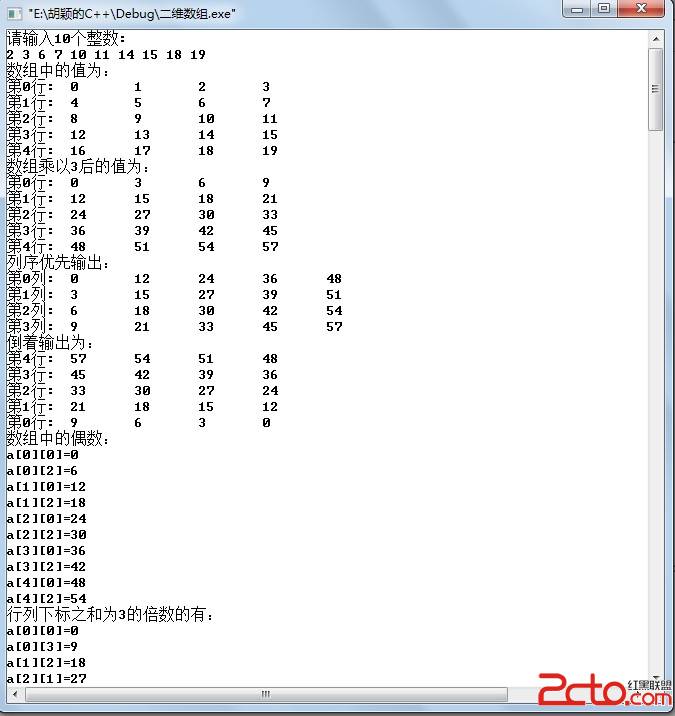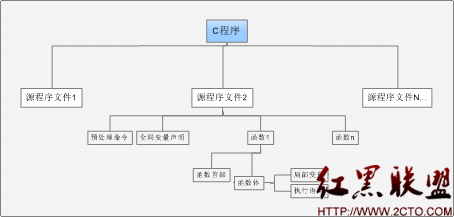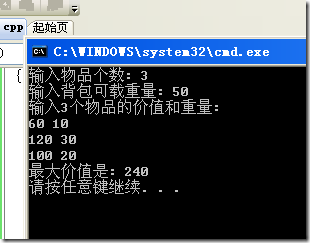C++复习之STL(二)—关联式容器set和有序vector的使用选择问题
1.set的宣言
先看看C++标准中对set的介绍:
A set is a kind of associative container that supports unique keys (contains at most one
of each key value) and provides for fast retrieval of the keys themselves. Set supports
bidirectional iterators
下面列举关于set的两点事实,需要注意:
set对于性能有明确的保证:set::find和set::insert消耗时间级别都为logN。所以,如果你确实需要保证插入和检索时间在logN,set可能是个不错的选择。
set底层实现通常使用red-black tree:有额外的空间和时间负担。每个red-black tree的节点都需要存储颜色标记、指向子女和父亲的指针;插入需要树的重新平衡;查询和遍历需要指针操作。
2.另外的选择:二分查找
红黑树并非提供logN级别的搜索的唯一数据结构。很容易想到的就是在有序数集中进行binary_search,该算也提供的logN级别的时间复杂度,而且最数据结构的要求仅仅是“一个有序顺序集(该集支持某些必要操作)”,而且, 常数因子比set更小。使用set会占用更多的空间,不利于cache机制的使用,且可能造成更多的page faults。
事实胜于雄辩,下面是用一段代码来对比set提供的搜索和二分查找提供的搜索的性能,编译环境为WOW64 Release
注意: 检测元素是否搜索到是必须的,此处忽略之,对于push_back等的调用其实可以使用“范围函数”来完成,可能性能更好!
#include <iostream>
#include <set>
#include <vector>
#include <algorithm>
#include <windows.h>
int main()
{
using namespace std;
const int MAX_ELEMENT = 1000000;
const int MAX_SIZE = MAX_ELEMENT+1;
const int MAX_TIMES = 10000000;
set<int> intSet;
vector<int> intVect;
intVect.reserve(MAX_SIZE);
for (int i = 0; i < MAX_SIZE; ++i)
{
intSet.insert(i);
intVect.push_back(i); //这里由于插入的特殊性,intVect元素状态是“有序”的
}
DWORD st1, st2;
st1 = GetTickCount();
for (int i = 0; i < MAX_TIMES; ++i)
{
intSet.find(MAX_ELEMENT);
intSet.find(MAX_ELEMENT/2);
intSet.find(MAX_ELEMENT/15);
}
st2 = GetTickCount();
cout << "intSet.find(...):\t" << (st2 - st1) << "ms" << endl;
st1 = GetTickCount();
for (int i = 0; i < MAX_TIMES; ++i)
{
binary_search(intVect.begin(), intVect.end(), MAX_ELEMENT);
binary_search(intVect.begin(), intVect.end(), MAX_ELEMENT/2);
binary_search(intVect.begin(), intVect.end(), MAX_ELEMENT/15);
}
st2 = GetTickCount();
cout << "binary_search(...):\t" << (st2 - st1) << "ms" << endl;
return 0;
}
运行截图:

可以看到,由于缓存、缺页等各方面因素,二分查找和对于set的查找性能相差极大。更详细的信息可以用Profiler来获得。下面给出了任务管理器中的截图,程序为STL.exe*32。
![]()
3.总结,3个选择
1.使用set:当元素个数可能会变得足够大,即N足够大,logN和N的区别非常明显之时,元素是随机插入的,插入和搜索交互发生,无法预料下一次的操作。
2.使用sorted_vector:需要快速的搜索和遍历,但是对插入的性能要求很低,或者元素是预先一次性插入的,然后排序好, 在此基础上进行二分搜索。亦或者对内存限制较大。或者确信搜索操作和插入、删除操作几乎不交错在一起。或者元素的插入是“几乎有序”的,这样的插入的额外负担较小。
3.使用基于哈希表的set:如果哈希函数足够好和哈希表大小适合,通常情况下会提供常数级别的搜索。
4.简单sorted_vector实现
#pragma once
#include <vector>
#include <algorithm>
#include <functional>
template <typename T, typename Pred = std::less<T> > class sorted_vector
{
public:
typedef typename std::vector<T>::iterator iterator;
typedef typename std::vector<T>::const_iterator const_iterator;
typedef typename std::vector<T>::size_type size_type;
iterator begin() { return sort_vect.begin(); }
const_iterator begin() const { return sort_vect.cbegin(); }
iterator end() { return sort_vect.end(); }
const_iterator end() const { return sort_vect.cend(); }
void reserve(size_type sz) { sort_vect.reserve(sz); }
//Other wrapper help methods
//...
//Well, use res_size to avoid reallocation possibly
sorted_vector(int res_size, const Pred& p = Pred()) : sort_vect(), pred(p)
{
sort_vect.reserve(res_size);
}
template <typename InputIterator>
sorted_vector(InputIterator first, InputIterator last, const Pred& p = Pred())
: sort_vect(first, last), pred(p)
{
std::sort(begin(), end(), pred);
}
//This container is always sorted
//O(N)
iterator insert(const T& elem)
{
iterator it = std::lower_bound(begin(), end(), elem, pred);
if (it == end() || pred(elem, *it))
sort_vect.insert(it, elem);
return it;
}
//The element is the container should not be modified!!
//O(logN)
const_iterator find(const T& elem) const
{
const_iterator it = lower_bound(begin(), end(), elem, pred);
return it == end() || pred(elem, *it) ? end() : it;
}
private:
std::vector<T> sort_vect;
Pred pred;
};
测试代码如下,前面的性能比较代码段中修改即可:
sorted_vector<int> sortVect(MAX_SIZE);
for (int i = 0; i < MAX_SIZE; ++i)
{
intSet.insert(i);
intVect.push_back(i); //这里由于插入的特殊性,intVect元素状态是“有序”的
sortVect.insert(i);
}
cout << *(sortVect.find(MAX_ELEMENT/2)) << endl;
DWORD st1, st2;
st1 = GetTickCount();
for (int i = 0; i < MAX_TIMES; ++i)
{
sortVect.find(MAX_ELEMENT);
sortVect.find(MAX_ELEMENT/2);
sortVect.find(MAX_ELEMENT/15);
}
cout << "sortVect.find(...):\t" << (st2 - st1) << "ms&q
补充:软件开发 , C++ ,




